Honoring the Tuskegee Airmen
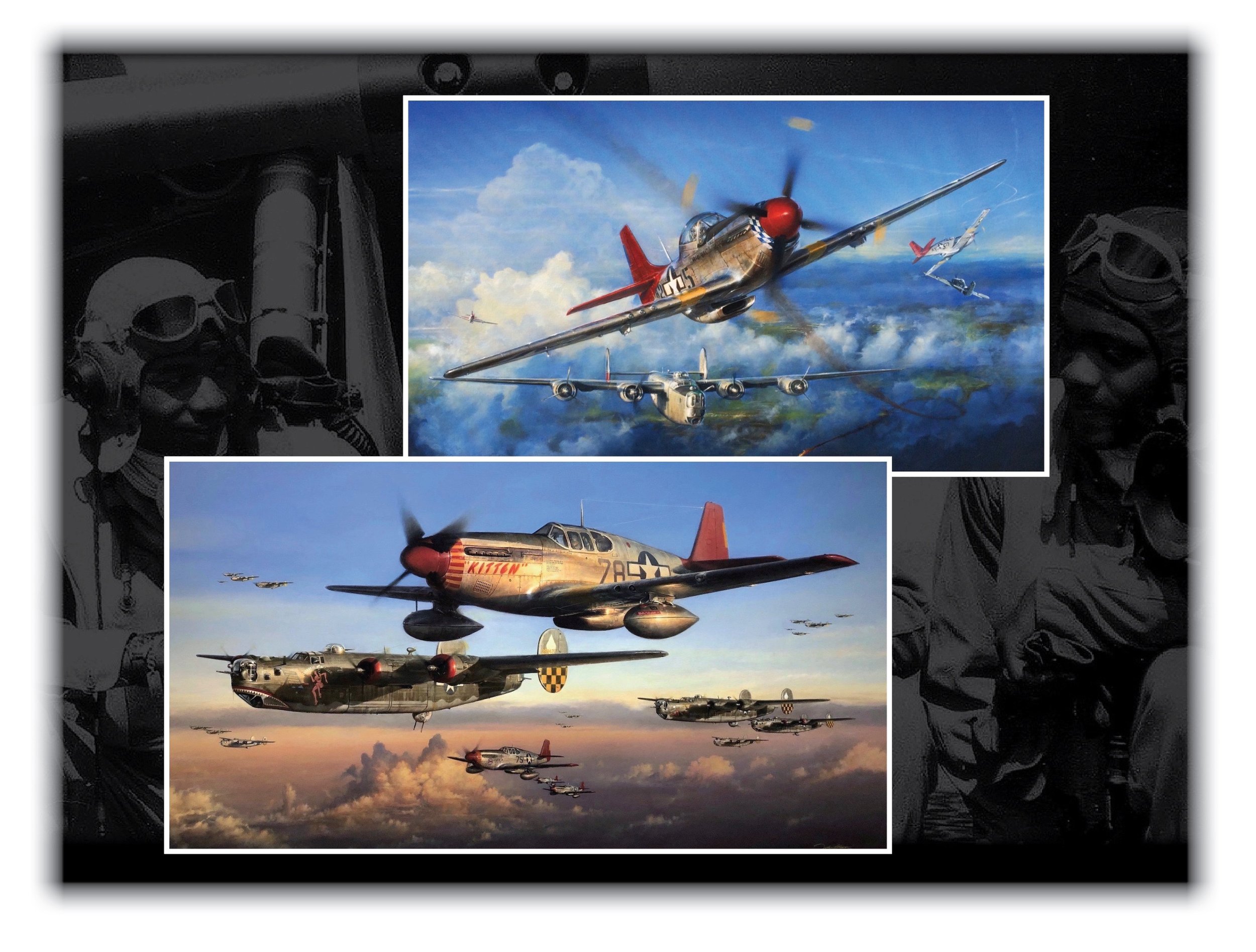
Over the years, it’s been a huge privilege to meet some of the greatest military aviators & veterans in history! This month, the Tuskegee Airmen have been greatly in the spotlight- I thought it would be fun to share some recollections of some of the great ones I had the chance to meet and work with over the years, starting with ‘Red Tail Angels’ in 1997 and the recent painting ‘Safe Passage Home’…
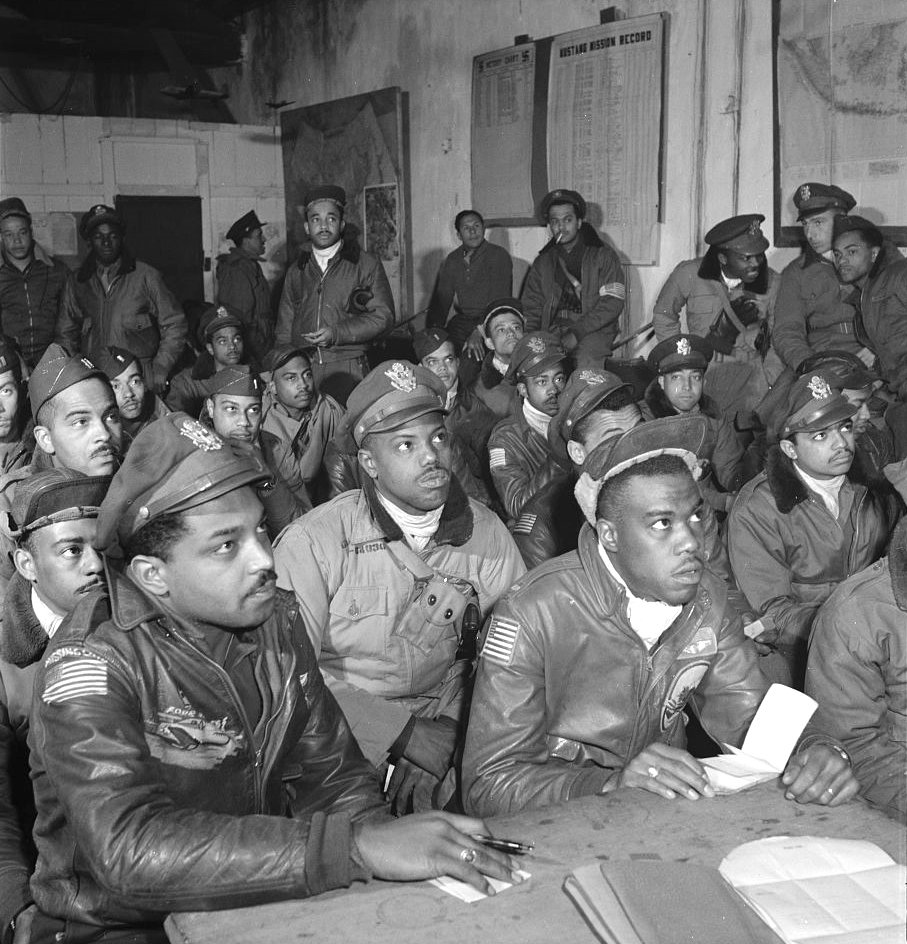
The Tuskegee Airmen were the first black military aviators in the U.S. Army Air Corps. At this time in history, racial segregation was the rule in the U.S. military, as well as much of the country. But young black Americans who aspired to serve their country as combat pilots met with significant obstacles, starting with the widespread racist belief that black people “could not learn to fly or operate sophisticated aircraft”, as stated by official sources at the time. But as the AAC began ramping up its training program, various newspapers joined civil rights groups in arguing that black Americans be included. These brave young airmen would soon make their mark in history which continues to inspire generations more than eight decades later.
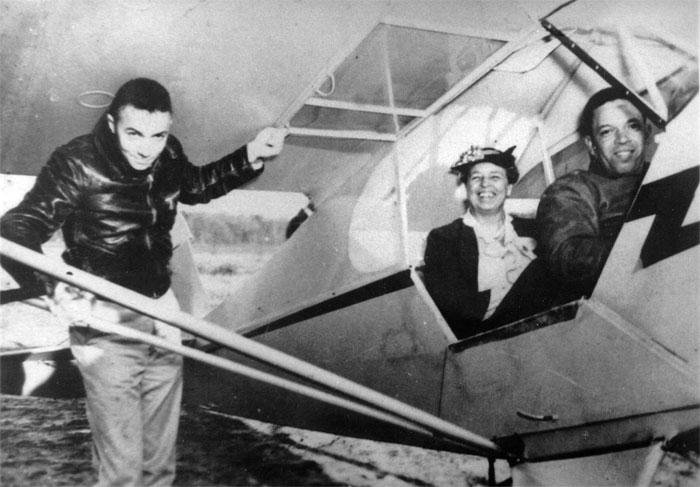
The “Tuskegee Experiment” took a great leap forward in April 1941, thanks to a visit by Eleanor Roosevelt to the airfield. Charles “Chief” Anderson, then the chief flight instructor in the program, took the First Lady on an aerial tour, and photos & film of that flight helped publicize the program. The program’s trainees, nearly all of them college graduates or undergraduates, came from all over the country. In addition to some 1,000 pilots, the Tuskegee program trained nearly 14,000 navigators, bombardiers, instructors, aircraft and engine mechanics, control tower operators and other maintenance and support staff.

Among the 13 members of the first class of aviation cadets in 1941 was Benjamin O. Davis Jr., the son of Brig. Gen. Benjamin O. Davis, one of two Black officers (other than chaplains) in the entire U.S. military. Born in Washington, D.C. on December 18, 1912, Davis would play a vital role in opening up the skies and the entire military for black soldiers.
Graduating from West Point in 1936 in the top 20% of his class, he was the first black West Point cadet in the 20th century. Earning his wings in March 1942, a short time later he was promoted to Lt.Col, leading the 99th Fighter Squadron, the 1st all-black unit in the Army Air Forces. The 99th deployed to North Africa in March 1943 to fight Axis troops in the region. Later that year, he returned to the U.S. and took command of the 332d Fighter Group.
Davis would continue his stellar military career for decades following WW2, retiring at the rank of Lt. General in 1970, where he was serving as deputy commander-in-chief of U.S. Strike Command (now U.S. Special Operations Command). Davis spent nearly 40 years in the military, breaking barriers at every level. He served all over the world, fighting against segregation on and off the battlefield.
On July 4, 2002, this great veteran died at 89 years old and is buried in Arlington National Cemetery.
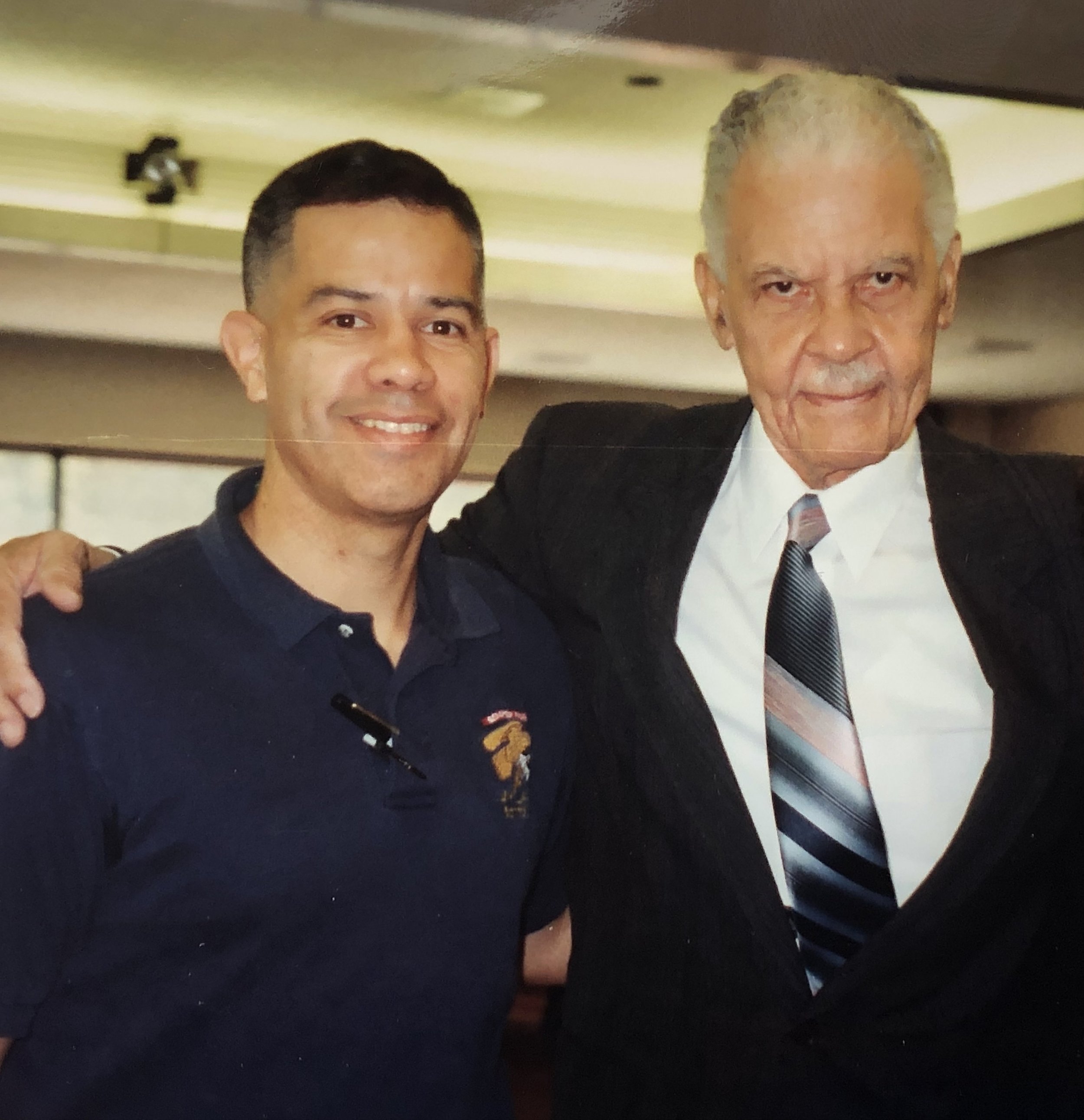
In the mid-‘90s, there were several people who were huge encouragements to me as I began my journey into historic Aviation Art. One of the most significant was Col. Paul Ortiz (USMC), a friend of mine who I’d met while living in central California, during a reunion of the Doolittle Raiders. By the late 90s, Paul and his family had been relocated to the Washington DC area, and it was through him I first became inspired by the story of the Tuskegee Airmen. Enthusiastic about promoting their great history through my artwork, Paul met with General Davis and the Washington DC chapter of the Tuskegee Airmen and arranged their participation with a new painting and print that would soon transpire!
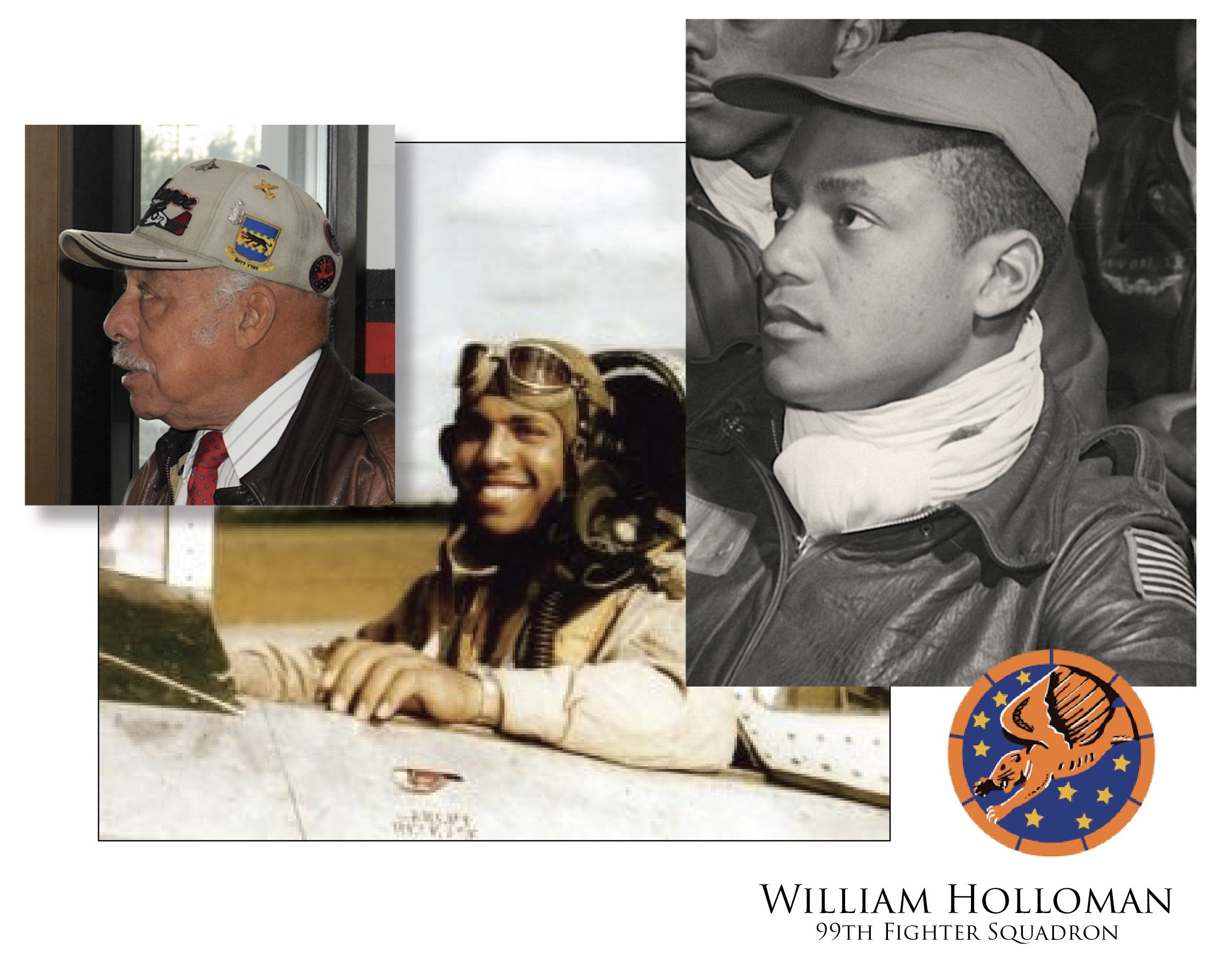
Whenever possible, when planning a painting, it was a thrill for me to consult firsthand with the veterans whose experiences I was hoping to depict. In this case, the first Tuskegee veteran I was able to meet with was Col. Bill Holloman, who lived in Southern California at the time. Bill had been one of the original combat pilots of the 99th Squadron, and along with fellow veteran Bill Ellis, we brainstormed on concepts for a painting. We discussed the marvelous record the Tuskegee Airmen had of successfully escorting American B-17s and B-24s during combat missions, and figured this would be an appropriate place to start. Bill recalled a number of missions in which a bomber would be vulnerable as a straggler, having one or more engines disabled, and they’d have to fend off German wolves seeking easy prey…He recommended a scene in which they were safely “protecting the cripple”. He remembered also meeting bomber crewmen who were grateful for helping save their lives by their action in the skies over Europe. Bill would later become the USAF’s first black active duty helicopter pilot, also serving in the Vietnam War.
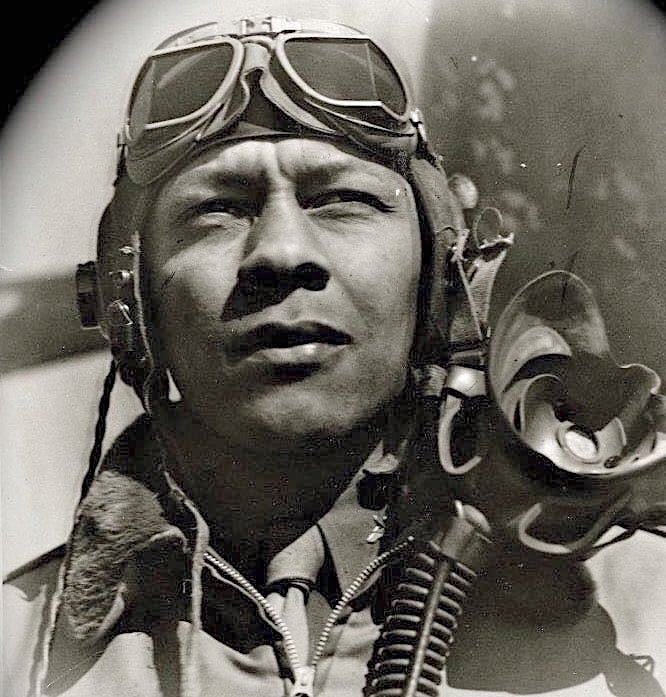
WILLIAM "WILD BILL" CAMPBELL-When discussing specific aircraft to put in my upcoming painting, I’d enjoyed my discussions immensely with Col. Holloman, and suggested we depict his P-51 in the scene. He was enthusiastic, but recommended the main Mustang depicted be that of his fellow 99th Squadron pilot Bill Campbell, also a resident of California. It was decided that Campbell’s plane, with his nickname “Wild Bill” be the primary aircraft in the painting, with Holloman as his wingman in the background. More on ‘Wild Bill’ Campbell’s great career in a few moments…
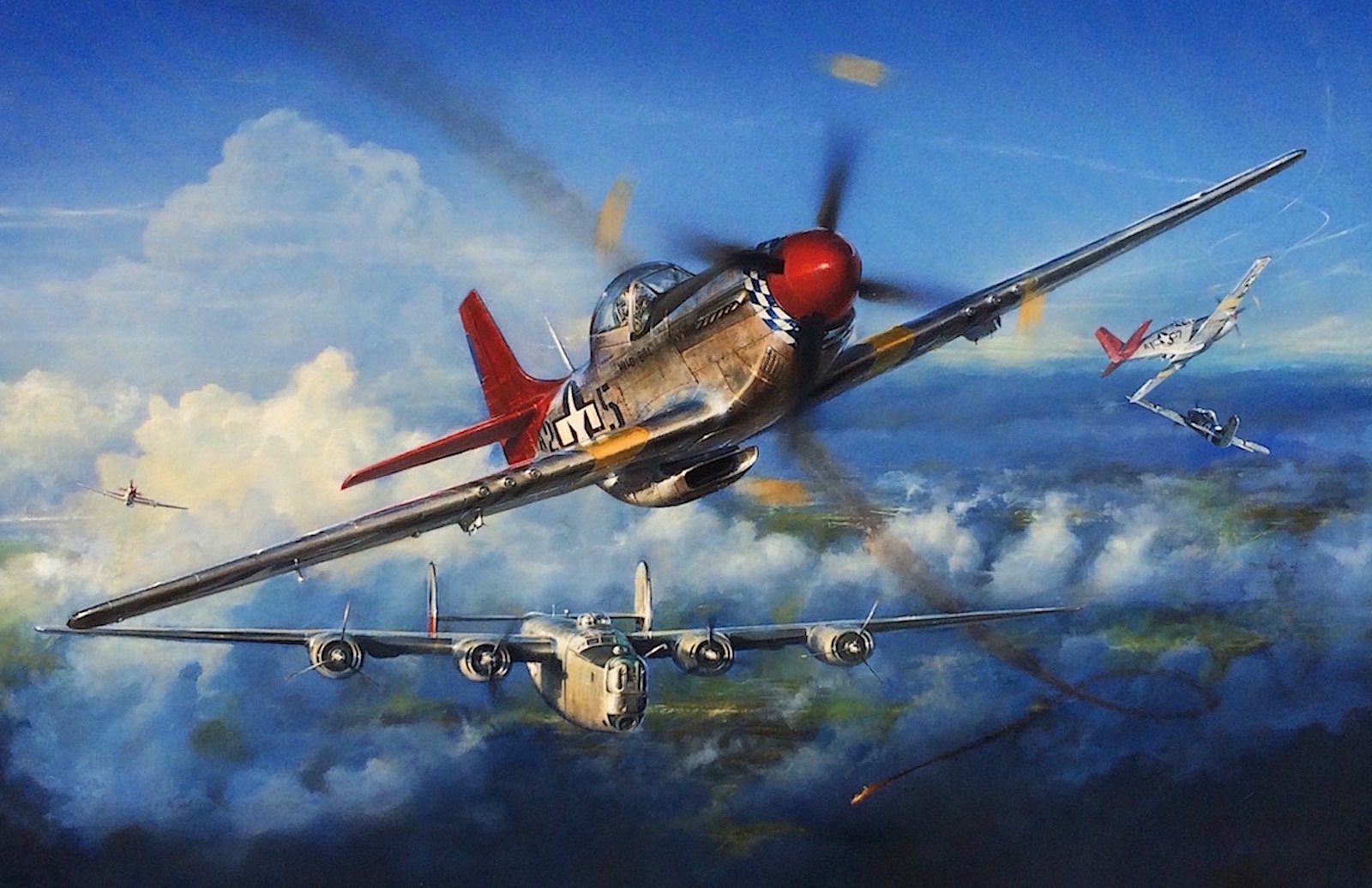
Red Tail Angels
In 1997, I completed the painting “Red Tail Angels”, depicting Mustangs of the 99th Fighter Squadron protecting a crippled Liberator from the 459th Bomb Group which was straggling behind. The painting illustration was done in mixed media, using Prismacolor pencil, gouache (opaque watercolor) and acrylic. In addition to creating limited edition lithographs of the scene, this image would later go on to be used to illustrate articles on the Tuskegee Airmen, be featured on the cover of Aviation History magazine, and even later be reproduced as a wall-sized mural in a museum near where the 99th Fighter Squadron trained in World War II.
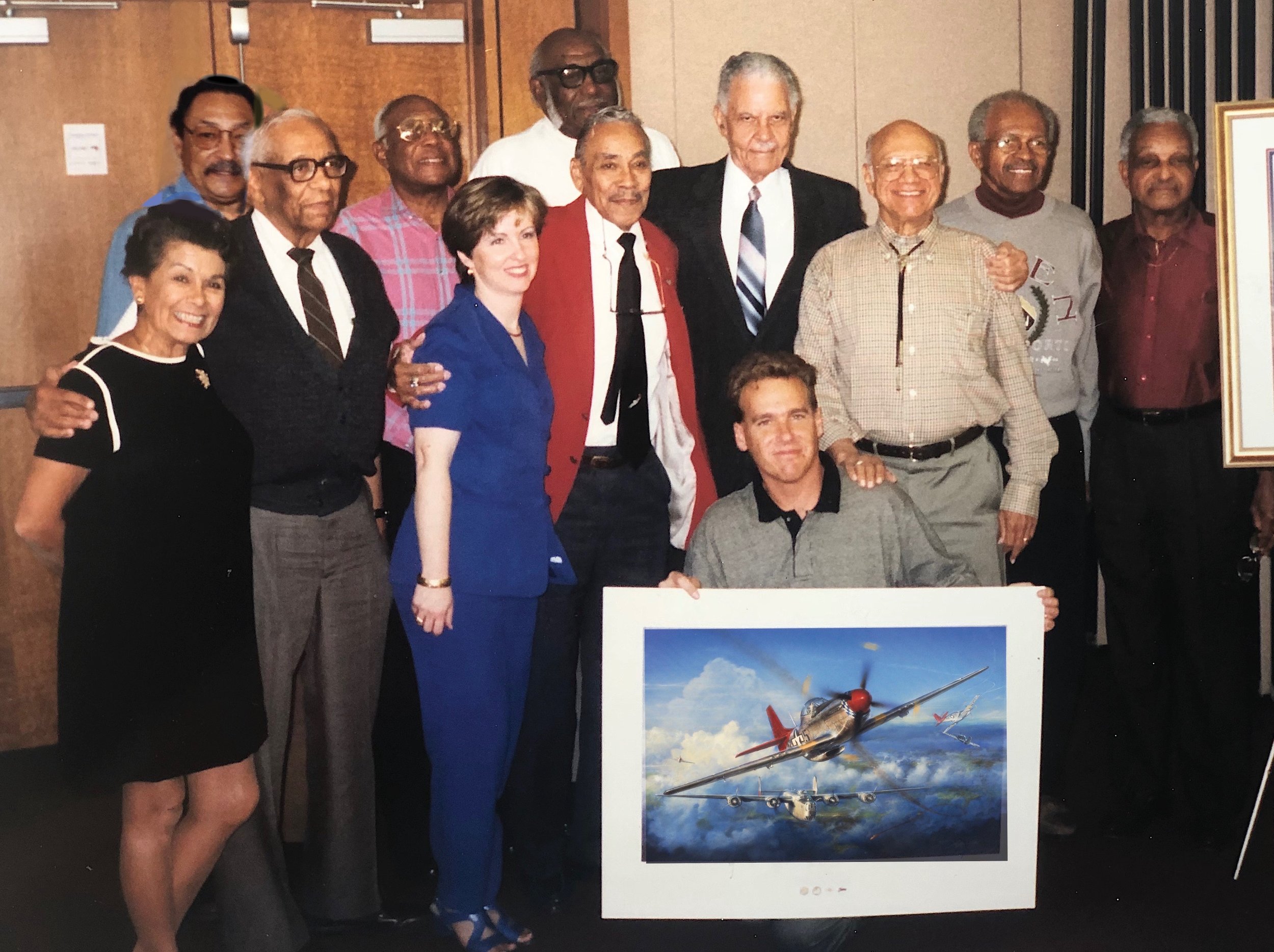
It was indeed a great honor to have the participation of numerous veterans of the Tuskegee Airmen in signing prints of Red Tail Angels.
My friend Col. Paul Ortiz had arranged a couple print signing sessions on the East Coast, the first of which was in Washington DC. Tuskegee veterans pictured here (L to R) are: Bill Broadwater, Harry Sheppard, Woody Crockett, Ira O’Neal, Sam Rhodes, Benjamin O. Davis Jr., Elmer Jones, Wylie Selden and George Walker lll. Paul Ortiz’s mom Sophie and wife Michelle are also pictured, along with a much younger Yours Truly in the foreground with print.
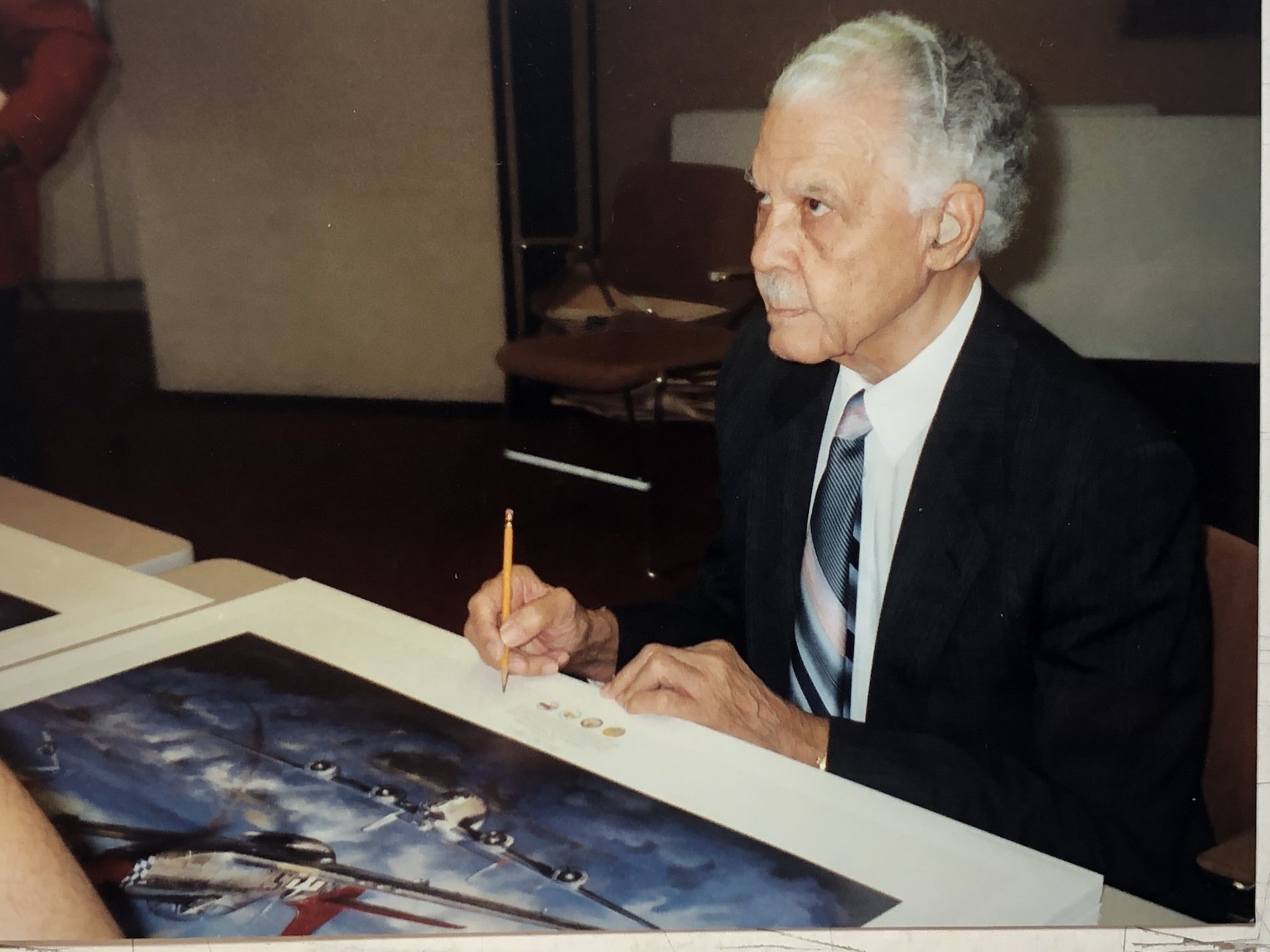
It was a particular honor to have General Benjamin O. Davis autograph the Main Edition of ‘Red Tail Angels’. This extraordinary gentleman was so loved by his men, and at this point in his life it was a rare treat for them to be able to spend an extended period of time with him. He was just experiencing the beginning phases of dementia, but his quiet good nature and charisma were still evident in all the time we were able to spend together.
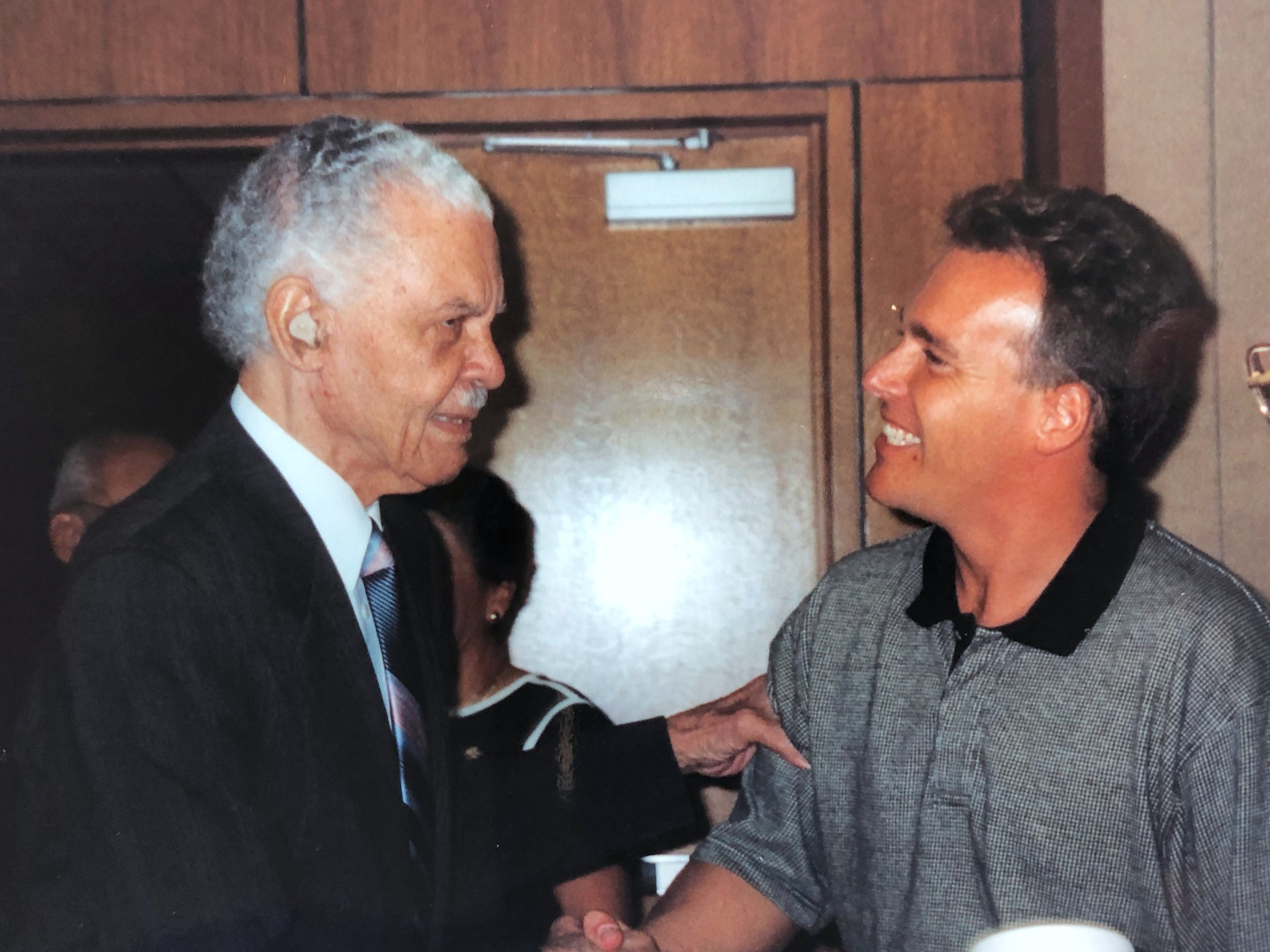
Looking back over the years, I’m grateful for the privilege I’ve had to meet and work with some of America’s greatest aviation veterans in history. Truly, this day spent with General Davis was one of the highlights.
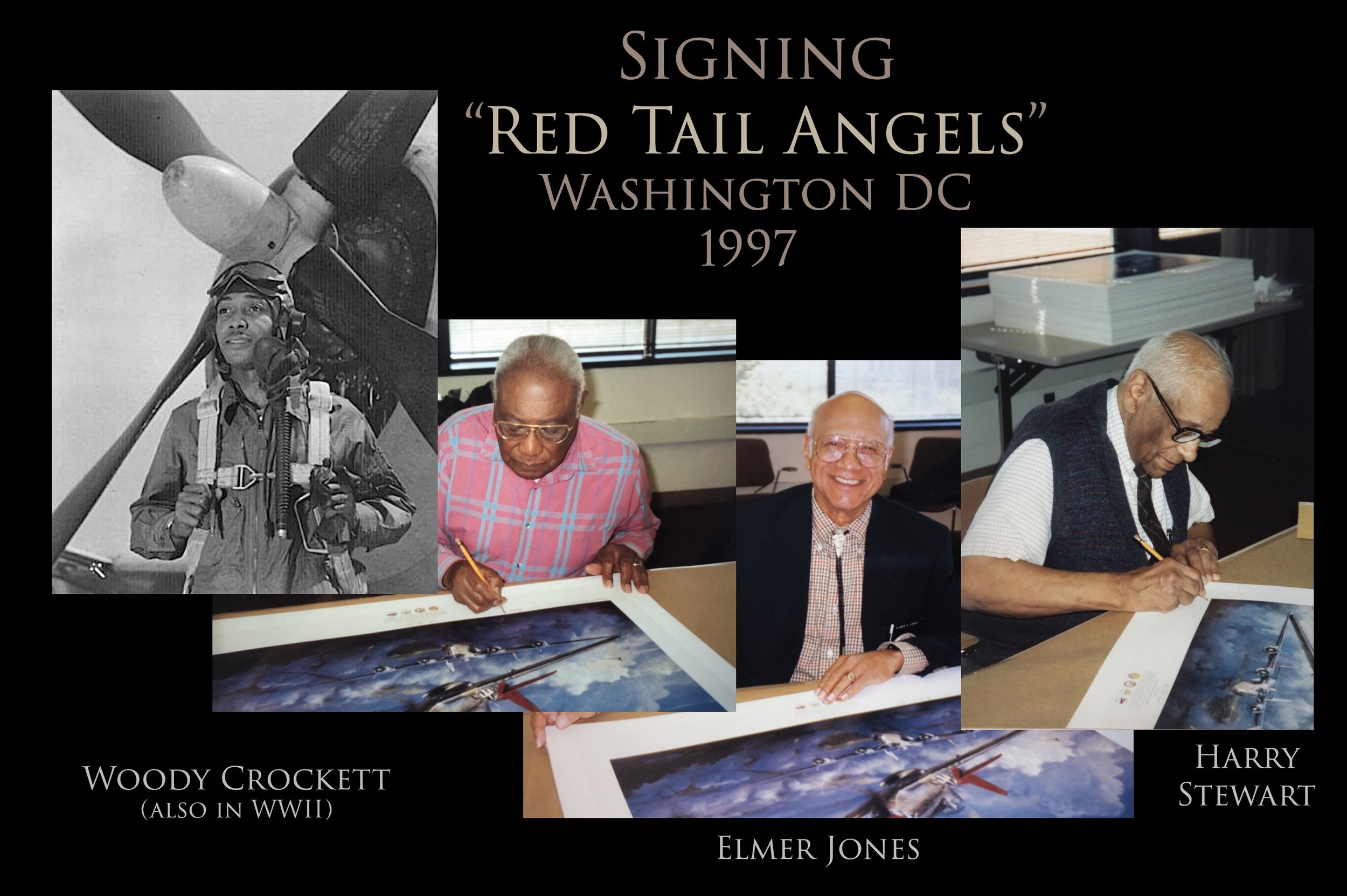
A few more of the great guys who were signing ‘Red Tail Angels’ in Washington…
Woody Crockett , Elmer Jones and Harry Sheppard.
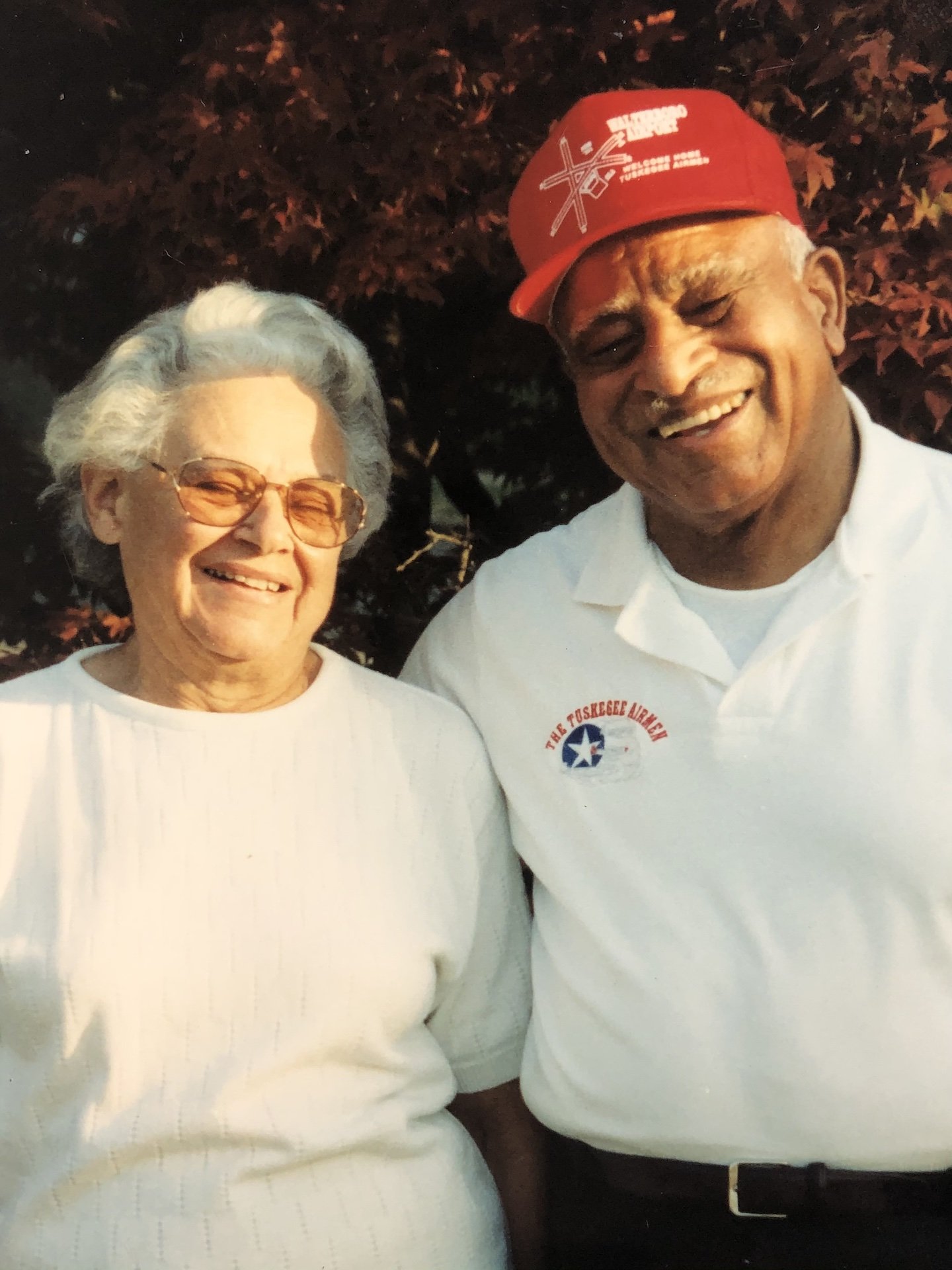
Following our print-signing day in DC, our next stop was New York City, to the home of another one of the original 99th Squadron pilots, Spann Watson. What an amazing guy! He and his wonderful wife were great hosts for Col. Ortiz and I, as he and two other legendary Tuskegee veterans were soon to arrive as well.
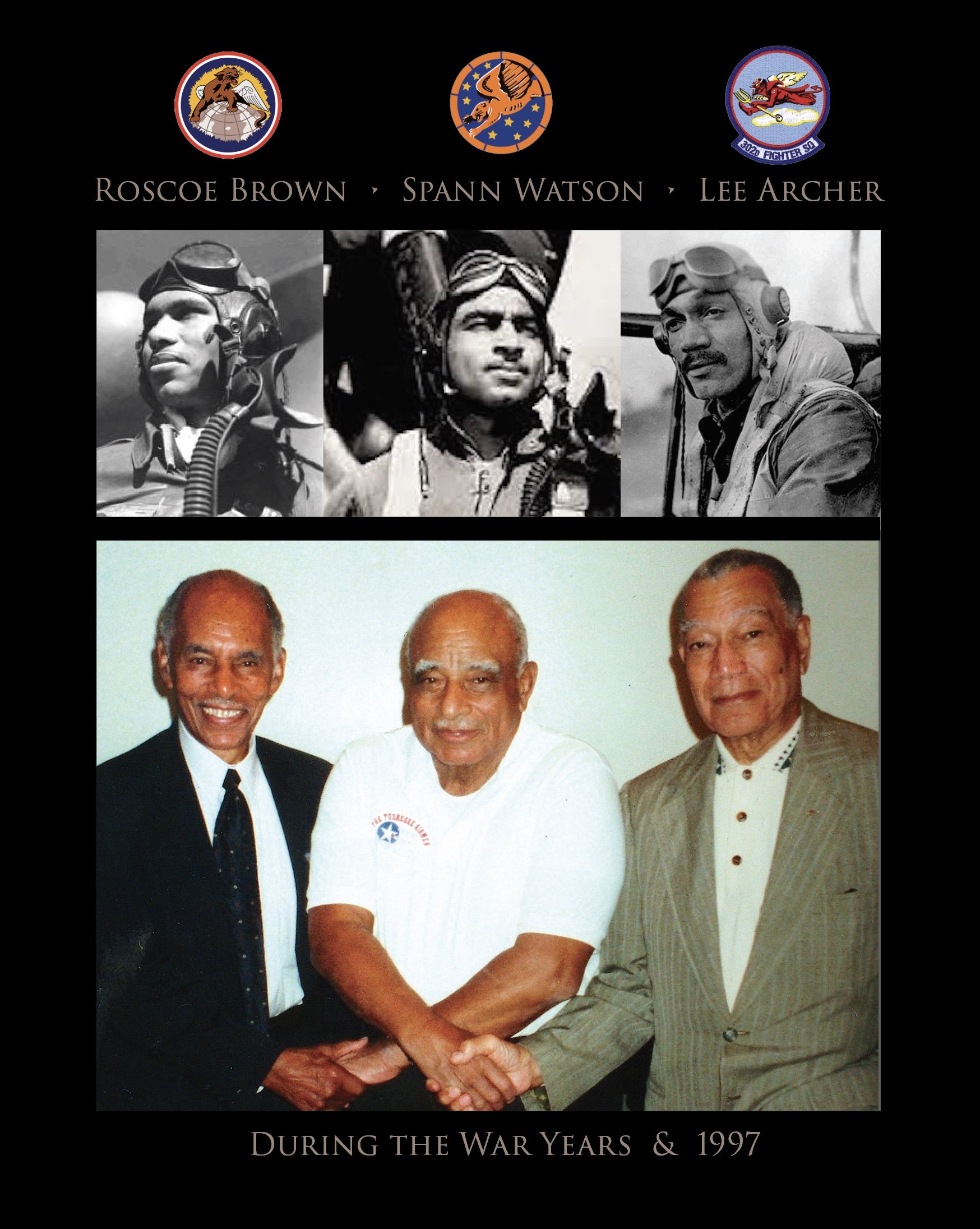
Soon after we arrived at Spann Watson’s home, two of Tuskegee’s most notable pilots arrived to sign ‘Red Tail Angels’ as well. Dr. Roscoe Brown, one of the relatively few American combat pilots credited with air-to-air kills of the Messerschmitt Me262 jet, and Col. Lee Archer, who is considered by many to be the T.A.’s only ace. Needless to say, the conversations had by these three were incredible…My only regret is that I didn’t have a tape recorder handy. Also, Spann Watson was a great fan of jazz, and typical of many wartime pilots in their advanced years, a bit hard of hearing. So throughout the signing day, in the midst of all the incredible reminiscings of these three, we were treated to lots of GREAT jazz at very high volume. Despite ringing ears by the end of the day, a great time was had by all. =)
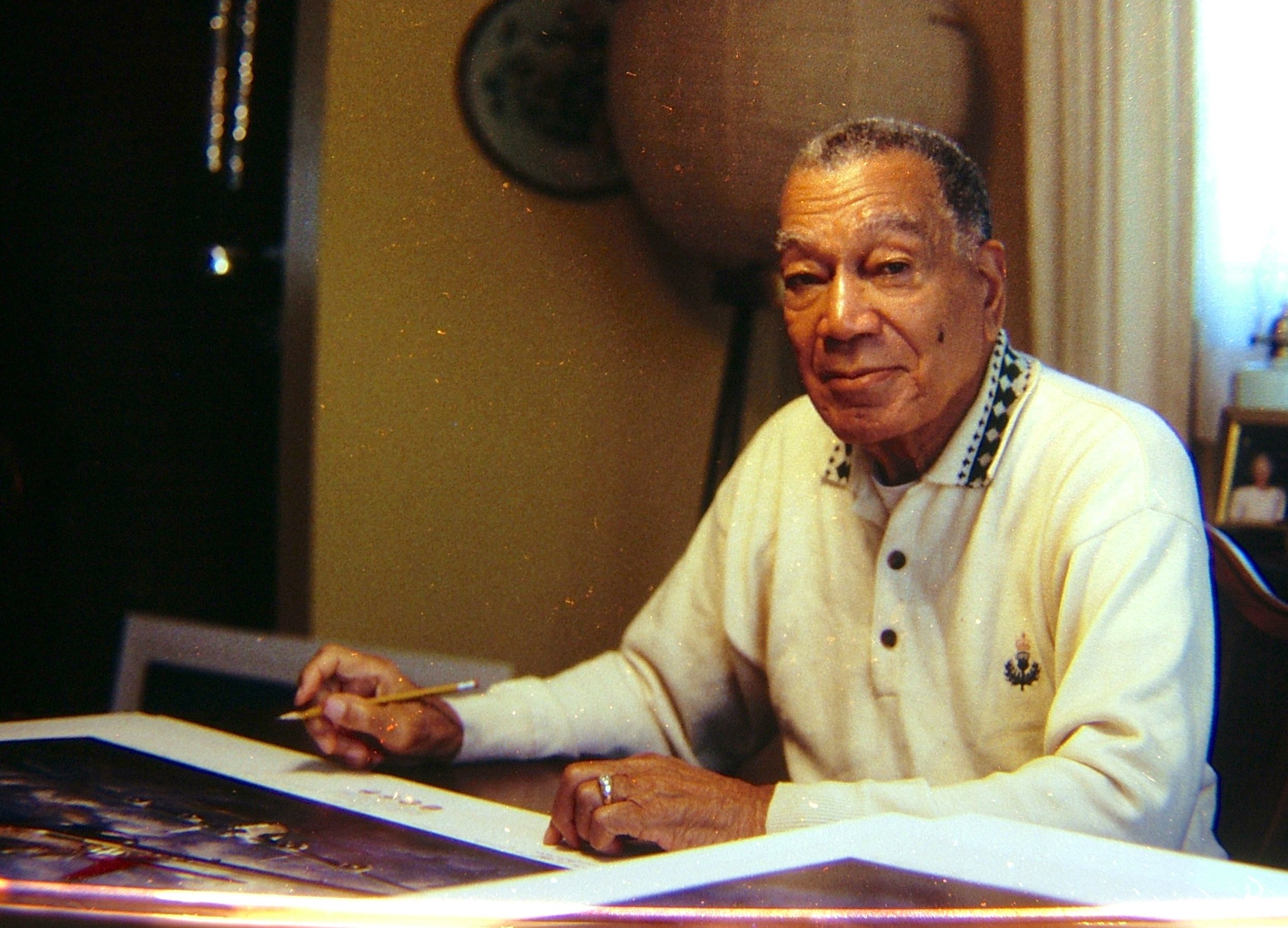
It was a special highlight to become acquainted with Col. Lee “Buddy” Archer, who is one of the Tuskegee Airmen’s most recognized faces. In 1997, It was hard to imagine this wonderful soft-spoken gentleman as one of their most lethal pilots in the skies over Germany. As mentioned previously, Lee is considered by many to be the only ‘Ace’ of the group, and consequently the only black U.S. pilot to earn this designation for shooting down at least five enemy aircraft. During the war however, he officially claimed to have shot down only four planes. He and another pilot both claimed victory for shooting down a fifth aircraft, and he was credited for only half the kill, and that half kill was later taken away. The discrepancy between official records and later reporting has caused some controversy, and this gracious and self-deprecating veteran was never known to insist on his “ace” status. Archer also destroyed six aircraft on the ground during a strafing mission in August 1944, as well as several locomotives, motor transports and barges.
On a personal note, in later years, Lee Archer worked with my uncle David Walton at General Foods, as one of the first black corporate vice presidents of a major U.S. company.
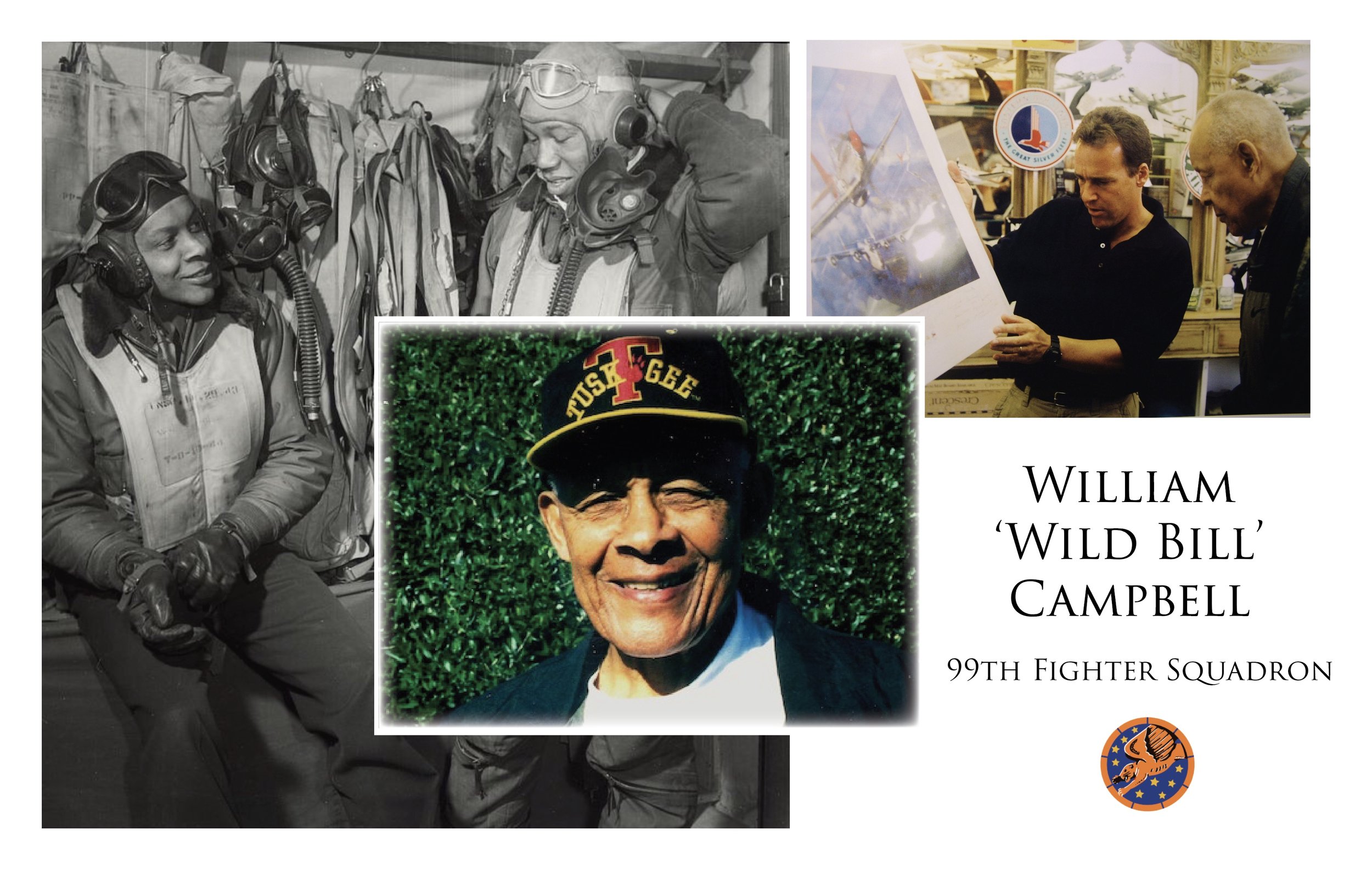
Returning to California, the next great group of Tuskegee Airmen to sign prints of ‘Red Tail Angels’ included the pilot of the main Mustang depicted, Col. William “Wild Bill” Campbell. As was typical with virtually every single one of these veterans, Bill was so genuine and gracious, and so willing to discuss the experiences he’d had during those years in Europe. Living in California at the time, I had the privilege of getting together with him on several other occasions in the following years, at or near his home in the area of Monterey, California. Great memories!
Bill was actually born & raised in Tuskegee, Alabama, and graduated from Tuskegee Army Airfield’s class 42-E in July 1942 as a 2nd Lieutenant. He’d go on to fly the 99th’s very first combat mission in Tunisia, 1943. He and Spann Watson later were assigned to the 553rd Fighter/Bomber squadron, becoming the first black American pilot to drop a bomb on enemy targets in US history. Over the course of WWII, he flew 106 missions, and would go on to receive the Distinguished Flying Cross, and numerous other decorations. Colonel Campbell died at the age of 95 in 2012 and was buried with full military honors at Arlington National Cemetery.

To sign “Red Tail Angels” in California, Col.Bill Campbell was joined by friends and fellow veterans Colonels Richard Caesar (pictured), Price D. Rice and Ted Wilson.
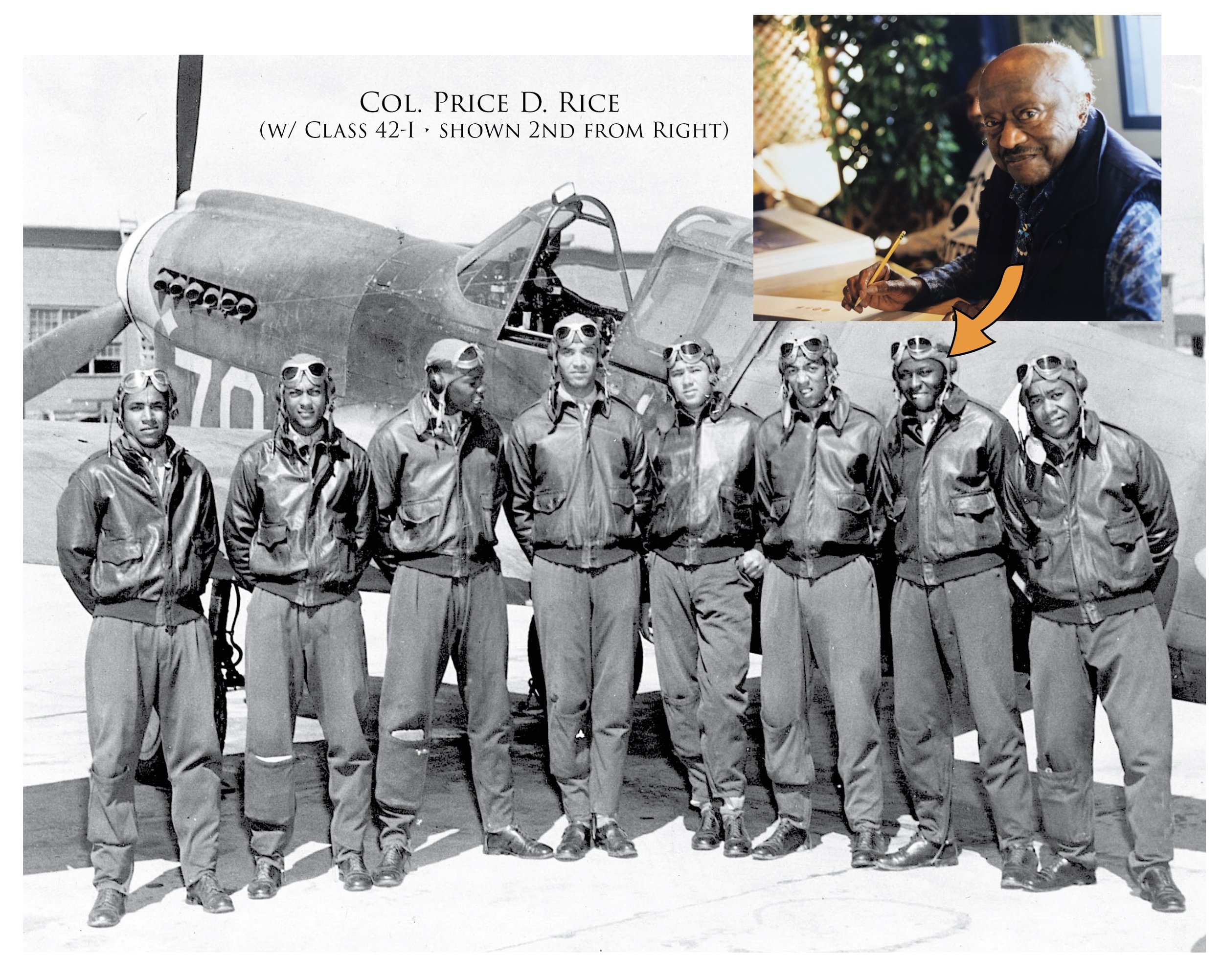
Here’s a shot of Col. Price D. “PD” Rice during his days following training in the P-40 in Tuskegee class 42-I , and in California, 1997.
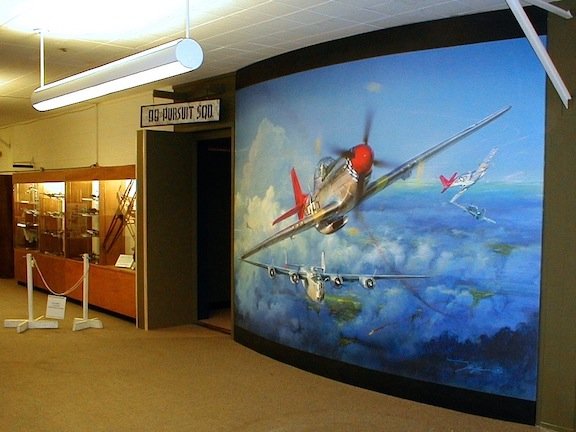
By the spring of 1941, Chanute Field, Illinois was home to thousands of draftees and enlisted men. On March 22, the 99th Pursuit Squadron was activated at Chanute. They would go on to start their own training at Tuskegee in July that year.
The Chanute Air Museum has done a wonderful job honoring the men of the 99th as well as the entire population of the Tuskegee Airmen. They set aside a large room to tell the story of the 99th Pursuit (later “Fighter”) Squadron and did it with flair. The first thing you see is a wall-sized mural of “Red Tail Angels”.
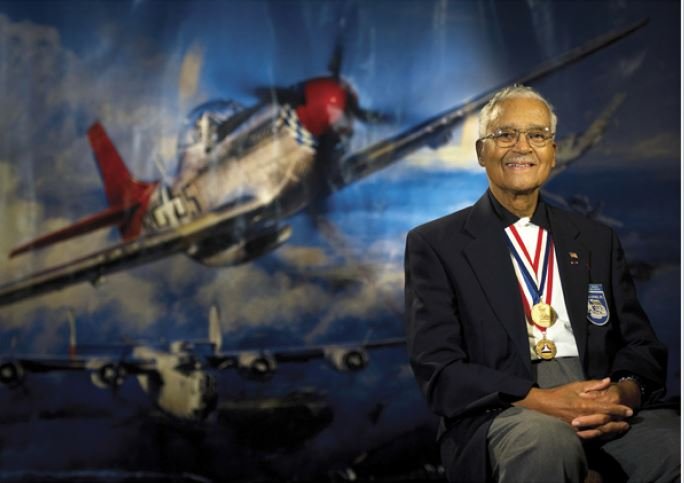
One of the most well-known and beloved Tuskegee Airmen was Charles McGee…
When I first met this great veteran, he was long-retired at the rank of Colonel. It was a pleasure to meet and work with this wonderful combat pilot of THREE wars, World War II, Korea and Vietnam, not only on ‘Red Tail Angels’, but also in recent years on what was to become one of my favorite recent projects honoring the Tuskegee Airmen…

‘Red Tail Angels’ prints which had been signed by the combat pilots of the Tuskegee Airmen sold out quite a few years ago, and became extremely popular and rather valuable on the ’Secondary’ market. Most rewarding to me as an artist of historical scenes has been seeing the reaction of the veterans themselves, and hearing the memories the paintings evoke for them. A few years after ‘Red Tail Angels’ had long sold out, I was contacted by a great fellow in the northern states named Tom Marry, who had one of the prints; Tom had a long-time family friend down the street who, as it turned out, was the waist gunner on a B-24 of the 459th Bomb Group. Mr. Corliss Norton had remembered flying numerous harrowing missions in which he and his crew had been safely escorted by the Tuskegee Airmen. Tom asked Mr. Norton to sign his print, and I wound up doing a nice pencil remarque of his B-24, which had been named “Cherokee Maiden”.
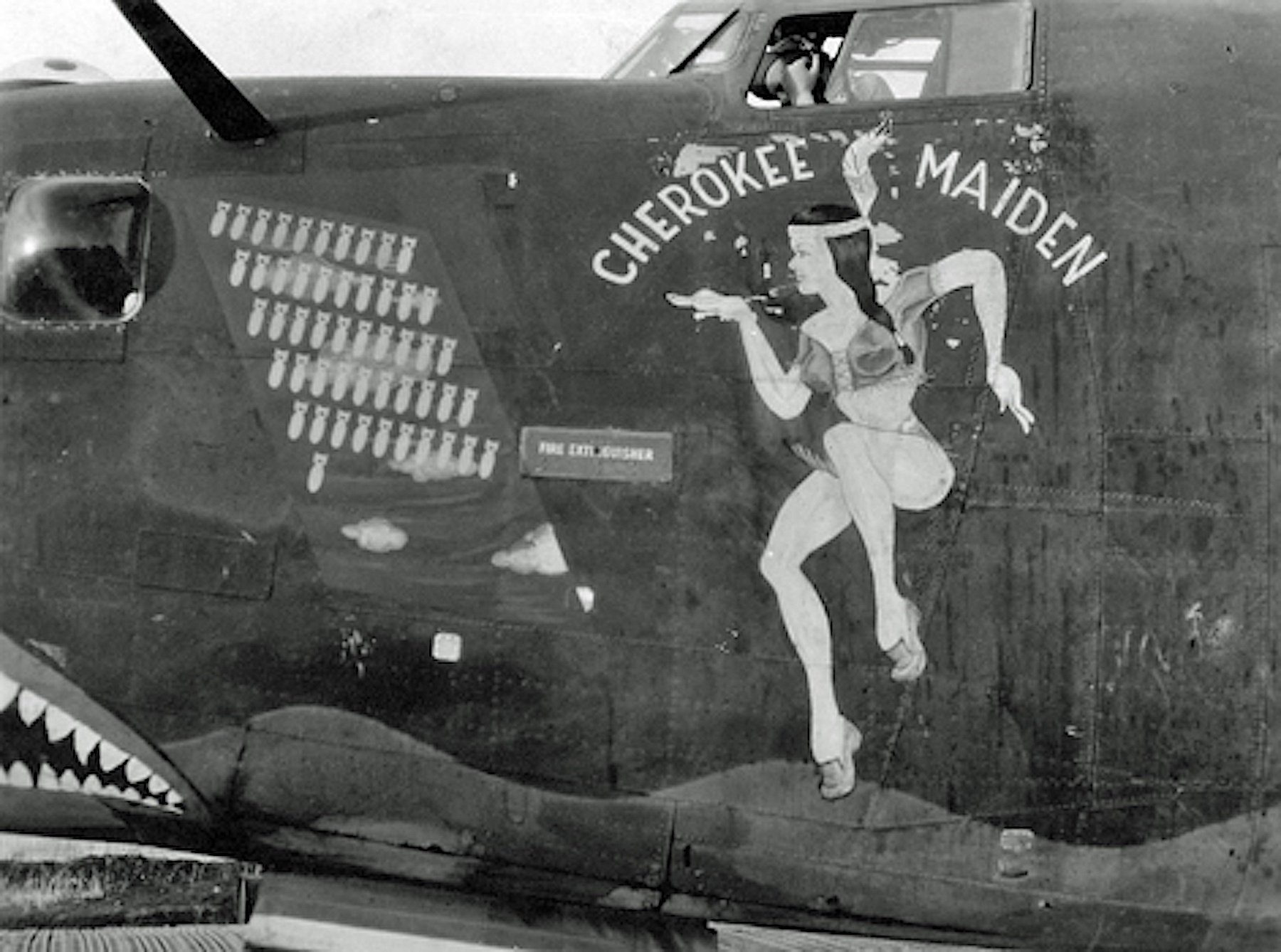
Cherokee Maiden- B-24 of the 459th Bomb Group
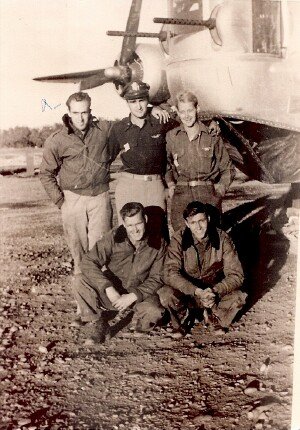
It was great hearing of Corliss Norton’s experience in ‘Cherokee Maiden’- Here he is pictured with his crew in late ’44 or early ’45- Corliss is in the back row, left, wearing the jacket.
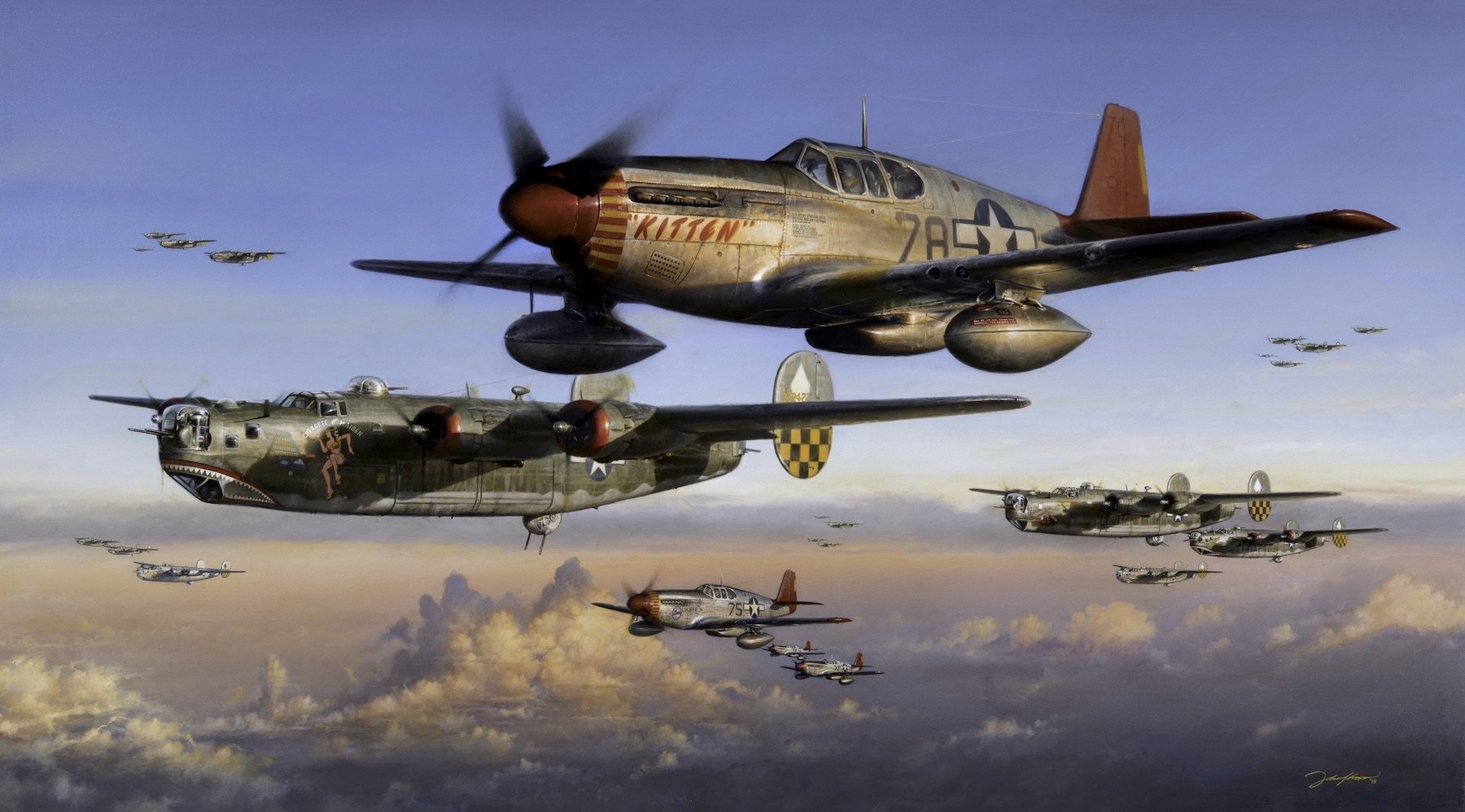
Back then, I'd mentioned to Tom that perhaps at some point it might be interesting to create another painting involving Mr. Norton’s plane being escorted by the Tuskegee Airmen, and they were both quite enthusastic about the idea! In recent years, I’d kept in occasional contact with Col. McGee, and thought it might be a wonderful tribute to have a print which included both his aircraft AND one of the bombers his group escorted. Truly a rare opportunity, and one that we felt would really highlight the mutual efforts of our Army Air Corps fighters & bombers working together during those days of war. I thought an appropriate title for the painting would be SAFE PASSAGE HOME.
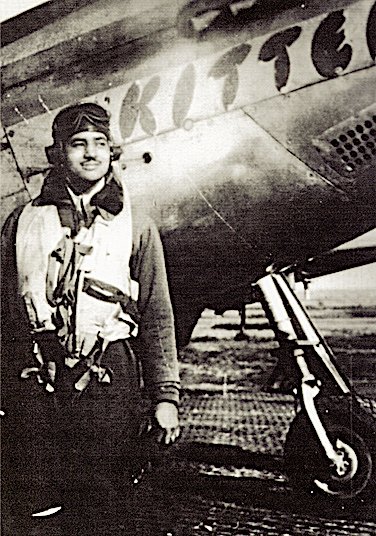
Here’s a famous wartime photo of Charles McGee with his P-51 “Kitten”, his affectionate nickname for his wife, Frances.
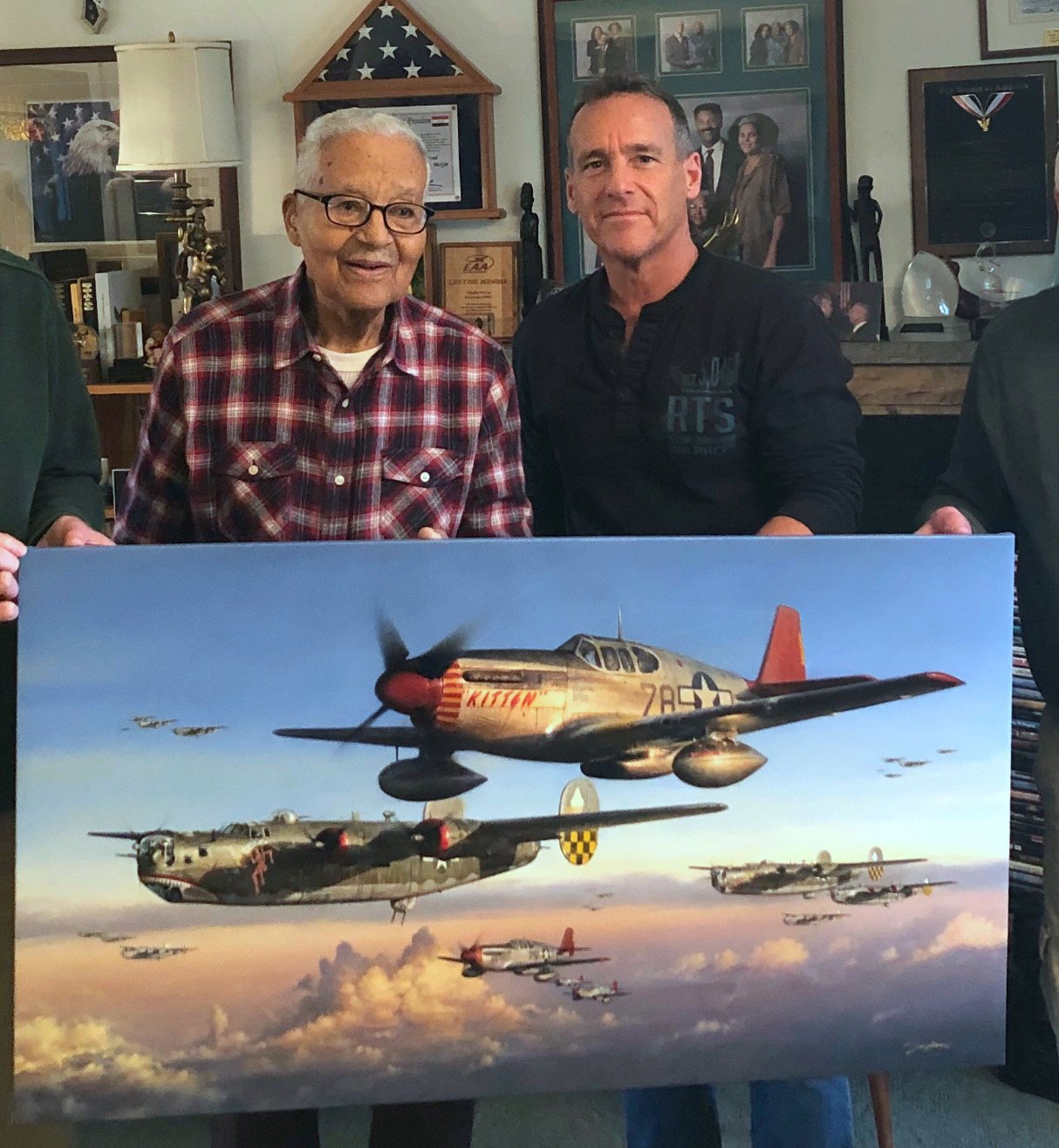
Toward the end of 2019, it was once again a thrill to spend a day with Col. McGee at his home in Bethesda, Maryland. This photo was taken just weeks before his 100th birthday…I’ll never forget how amazed I was at the clarity, sharpness and kindness of this amazing veteran. It was no wonder he was loved by so many. Just a couple months later, it was a thrill to see him on national TV during the President’s State of the Union message, in which Col. McGee was honored in front of the country after being promoted to Brigadier General McGee. A long overdue and well-deserved honor.
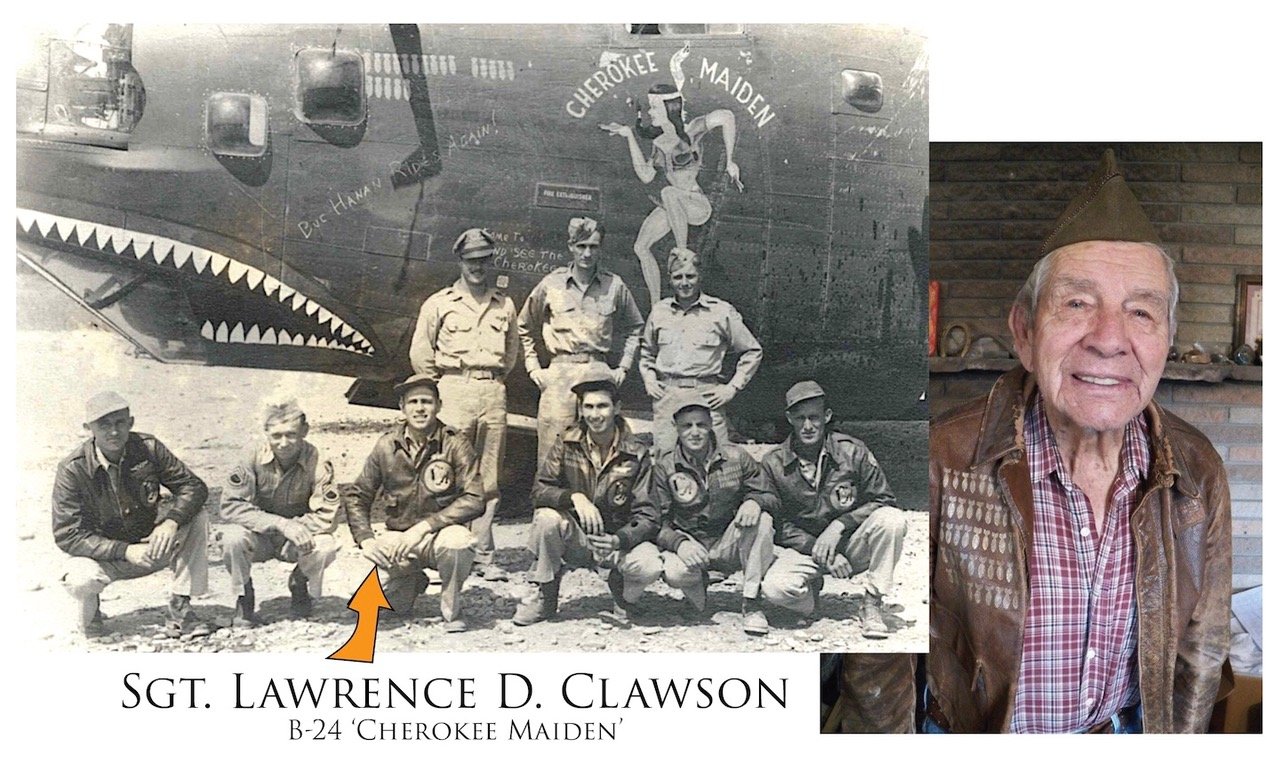
It’s incredible to me that more than 3/4 of a century since the end of the war that a print such as ’Safe Passage Home’ could still be signed by some of the men depicted in the scene…What an honor! Two different signed versions were created, and not surprisingly, are nearly sold out! Each print in the regular lithograph edition was personally autographed by both General Charles McGee of the Tuskegee Airmen and Sgt. Corliss Norton of the 459th Bomb Group.
Shortly after the lithograph version of Safe Passage Home was released as a print, it came to our attention that another veteran who flew more than 50 missions in B-24s had seen this painting. Amazingly, nearly all of them were in ‘Cherokee Maiden’... Sgt. Lawrence D. Clawson finished his tour just before Corliss Norton began his aboard this same aircraft! Since it was too late to have him autograph the regular lithograph print, it inspired a very unusual small hand-crafted print edition to be created, which has become the only one of its kind…
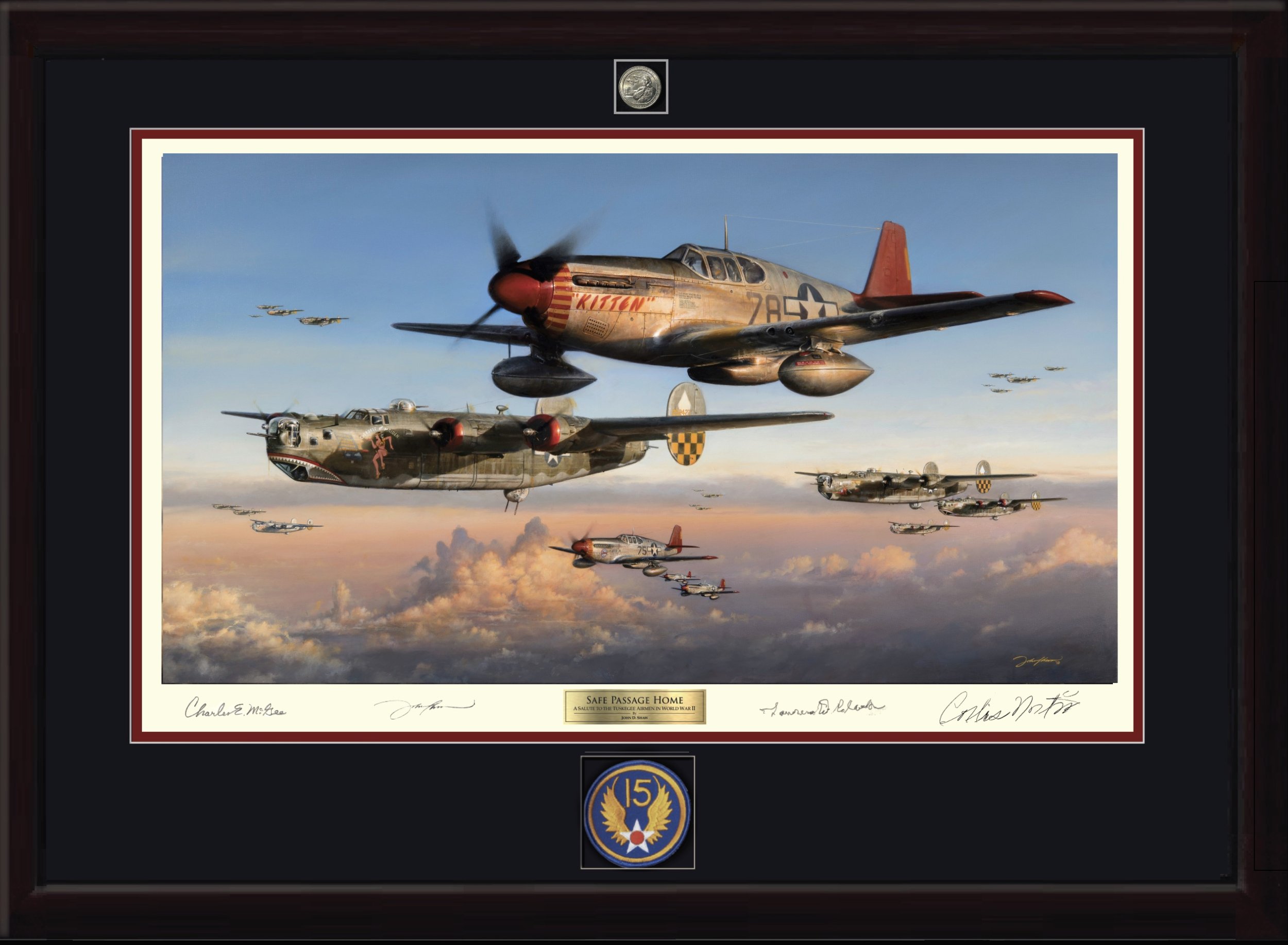
Special Color Plate Edition
This unique “Color Plate” print edition is created in the tradition of the old-world style of print publishing, when a custom printed color reproduction was adhered to a separately printed sheet…in this case, digital archive paper giclees of ’Safe Passage Home’ are printed and mounted to base border sheets autographed by all THREE of the great veterans previously mentioned- Charles McGee, Corliss Norton and Lawrence Clawson. Only a few of the original 40 of these beautiful hand-crafted pieces remain, as a tribute to the men who made such great history in the skies of World War II.
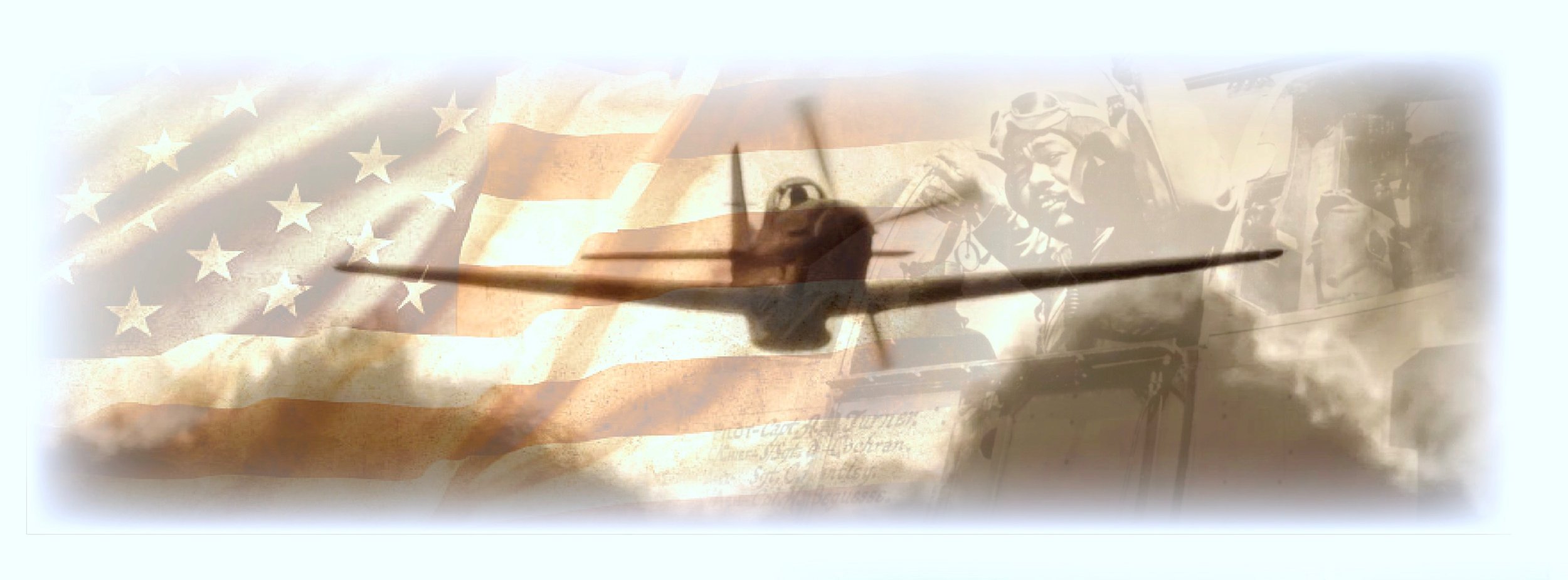
In these turbulent Twenty First century times, we’re grateful for the legacy so many great American veterans have given us - Thank you Tuskegee Airmen for your part in preserving our freedom!
John D. Shaw
From an early age John was fascinated with creating visually exciting artwork. Starting a career in art and graphic design in the early ’80s, he created a wide variety of commercial artwork for some noteworthy clients including Lucasfilms, Major League Baseball, Kellogg’s, and several major entertainment software companies.
His lifelong passion for WWII Aviation had led him experimenting with artwork, gradually honing his skills with pencil and oil paint, but in the early 1990s his passion just couldn’t be ignored any longer, and he began publishing his historical aviation and military paintings as limited edition prints.
His paintings began as a labor of love, inspired not only by his ability to create incredible images, but also for the opportunity to meet many of the iconic veterans who made this history – the men and women who helped shape the world we live in today.
“I’ve considered it one of the greatest privileges of my life to have had the chance to work first-hand with guys who have become some of my greatest heroes. The best part of all for me is showing them the finished painting. So often, it’s as if you can see a movie playing behind their eyes, as they relive those days, and they’re 20 years old again.”
John’s attention to detail and ability to capture military machinery – whether aircraft, ships or even vehicles – in the midst of battle is exceptional. His aircraft are not pristine, factory-fresh specimens; His subjects feature war-torn machines showing all the scars of intense fighting, exactly as they were at the height of battle. However, combine this with an uncanny ability to create lifelike and accurate portraits, which capture the veterans exactly as they were, and his is a rare talent indeed, making John one of the most accomplished artists our industry has seen.
John has now been at the forefront of our industry for almost 30 years and is equally at home with graphite or paint, creating full battle scenes or portraits. His pencil work is of a standard rarely seen and his Remarque’s in particular are exquisite works of fine art.
John’s historical editions have become some of the most famous and valuable of any aviation artist, with record figures being paid for his sold out editions on the secondary market. His breathtaking original paintings are highly prized and have found their way into air force bases, museums, homes and offices, across the globe, making him one of the world’s most collectible and highly regarded aviation and military artists.
